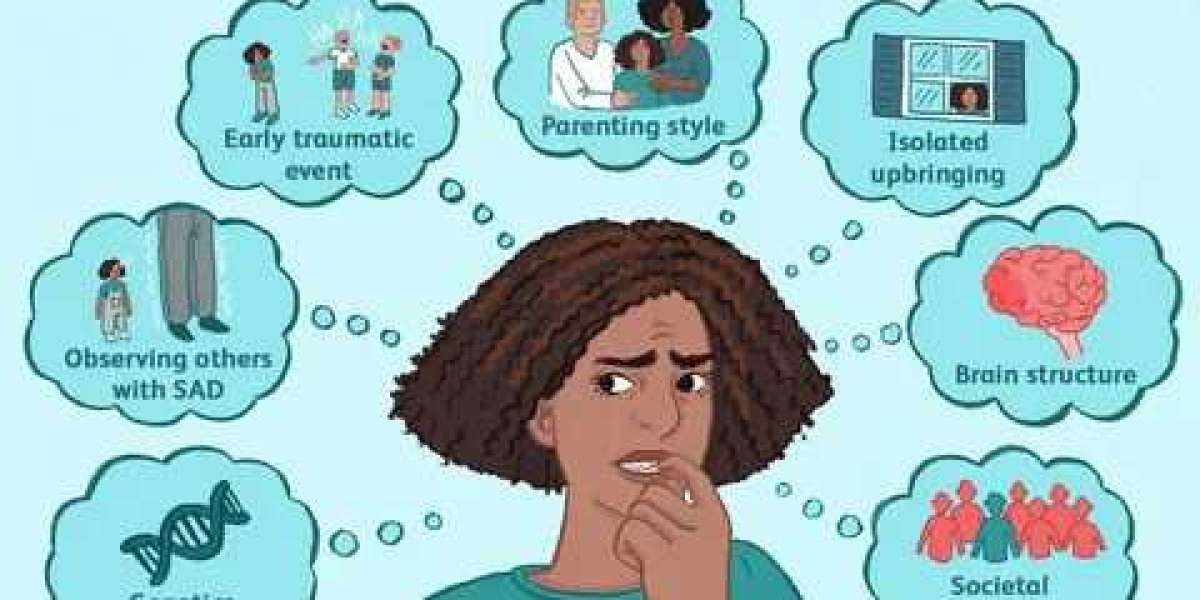All age groups are susceptible to anxiety disorders, including young people and adults. Effective management of anxiety symptoms and enhancement of overall well-being in children can be achieved by early identification and intervention. This article will discuss the different kinds of anxiety disorders that affect kids, warning signs and symptoms to watch out for, the value of early intervention, and anxiety therapy choices specifically designed for kids.
Recognizing Childhood Anxiety Disorders
Anxiety Disorder TypesAnxiety disorders in children can take many different forms, including:
Disorder of Generalized Anxiety (GAD):
characterized by a great deal of anxiety and stress over commonplace issues including safety, social interactions, and academic achievement.
Severe distress when removed from familiar surroundings or caregivers is a symptom of separation anxiety disorder, which makes one avoid activities associated to separation.
Particular Fears: severe dread or anxiety related to particular things or circumstances, such heights, animals, or medical procedures.
Social anxiety disorder is characterized by a person's avoidance of social interactions and performance circumstances due to a fear of being criticized, embarrassed, or humiliated in public.
Recurrent panic episodes along with physical signs including sweating, shaking, fast heartbeat, and shortness of breath are known as panic disorder.
Selective mutism is the persistent inability to speak in certain social contexts when speech is expected, even while one speaks in other contexts.
Typical Indications and Manifestations in KidsIt might be
difficult to identify anxiety symptoms in children since they may not seem the same as in adults. Typical indications and manifestations include of:
An excessive amount of anxiety or fear
An ongoing concern for one's family, friends, health, or safety, among other areas of one's life.
Physical complaints include headaches, nausea, tense muscles, exhaustion, and other symptoms that do not have a medical explanation.
Avoidance habits include staying away from social events, education, and circumstances that make one feel uneasy or anxious.
Behavior changes include irritability, clinginess, tearfulness, restlessness, trouble focusing, or trouble sleeping (insomnia or nightmares).
Perfectionism is characterized by extremely high expectations for oneself, a dread of making mistakes, and a constant need for validation.
Difficulties with separation: Profound distress when separated from caretakers, unwillingness to attend school, unable to sleep by themselves.
Social disengagement: Steering clear of social situations, having trouble forming friends, or worrying about criticism or judgment from others.
The Value of Prompt Identification and Intervention
Effects on GrowthUntreated anxiety problems in kids can have a big effect on how they develop socially, emotionally, and academically. Increased stress, trouble handling setbacks, strained relationships, low self-esteem, and poor academic performance are all consequences of chronic worry.
Peril of Extended ConsequencesUntreated anxiety disorders in children increase the likelihood of various mental health issues later in life, including depression, substance addiction disorders, and even suicidal thoughts or actions. Long-term results can be enhanced and these hazards can be reduced with early intervention.
Family RelationshipsChildren's anxiety disorders can also have an impact on the dynamics of the family, increasing parental stress, causing arguments, upsetting daily routines, and making it difficult to give the right kind of support and direction. As a component of anxiety treatment, family-based therapies can be advantageous for the kid as well as the family as a whole.
Early Identification Techniques
Honest CommunicationEncourage honest and nonjudgmental dialogue with your child. Encourage them to speak honestly about their emotions, worries, and fears without worrying about backlash. Actively listen to them, acknowledge their feelings, and offer comfort and encouragement.
Modifications in BehaviorObserve
Track Modifications in BehaviorObserve any shifts in your child's demeanor, interactions, and conduct. Keep track of any avoidance behaviors, physical symptoms, sleep concerns, or academic challenges that might point to underlying anxiety problems.
Speaking with ExpertsSee mental health specialists including pediatricians, psychologists, or child psychiatrists if you believe your child is exhibiting severe signs of anxiety. Timely diagnosis and proper anxiety treatment tactics might result from early intervention and assessment.
Options for Treating Anxiety in Children
CBT, or cognitive-behavioral therapyCognitive behavioral therapy (CBT) has been widely used to address anxiety issues in children. Through exposure therapy, it assists kids in recognizing harmful thought patterns, confronting illogical concerns, learning coping mechanisms (including relaxation techniques and problem-solving approaches), and eventually facing fearful circumstances.
Parental ParticipationTreatment
Parental ParticipationTreatment for anxiety in children can be more successful when parents or other caregivers participate in therapy sessions. Parents pick up skills to help their child, deal with stressors at home and at school, praise good behavior, and communicate clearly.
DrugsPsychiatrists occasionally recommend drugs, including selective serotonin reuptake inhibitors (SSRIs), to kids who suffer from severe anxiety problems that adversely affect their functioning. When other therapies have failed to yield adequate relief, medication is typically sought, and it is always administered under strict medical supervision.
Interventions in SchoolsChildren who are apprehensive can benefit from a supportive atmosphere that is created in collaboration with teachers, administrators, and school counselors. Anxious students can benefit from the implementation of accommodations (such gradual exposure, adjusted tasks, and relaxation breaks) as well as the promotion of social-emotional learning initiatives.
In summary
In order to address anxiety problems in children and enhance their general functioning and well-being, early detection and intervention are crucial. Parents, caregivers, and educators can help children effectively manage anxiety and thrive in various aspects of their lives by learning about the different types of anxiety disorders, identifying common signs and symptoms, putting early recognition strategies into practice, and accessing appropriate anxiety treatment options. Consulting mental health specialists guarantees an all-encompassing strategy catered to the child's unique requirements and situation, fostering mental health and long-term resilience.



